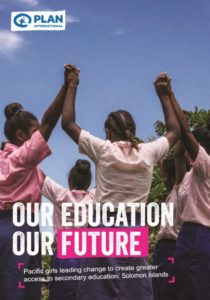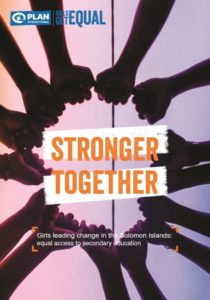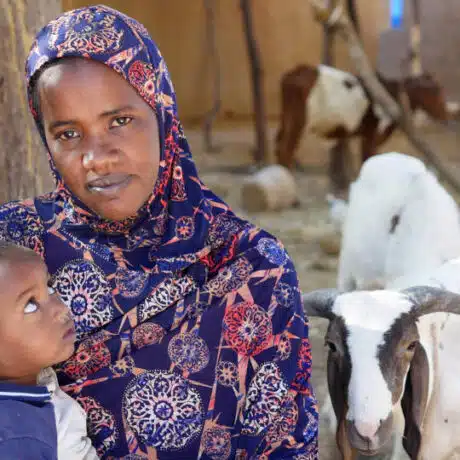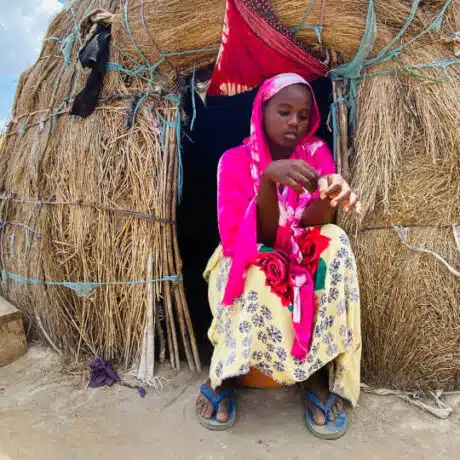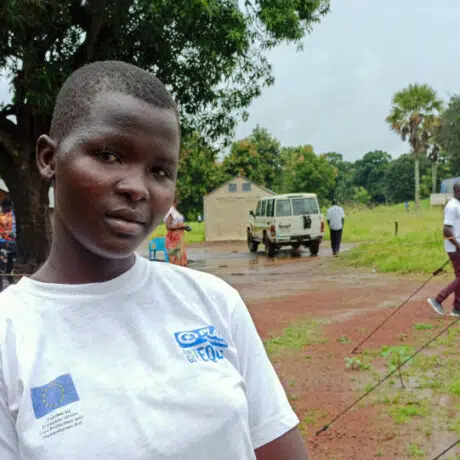News and Stories - Education - 13 June 2019
Girls’ Education in the Solomon Islands: Youth-Led Reports
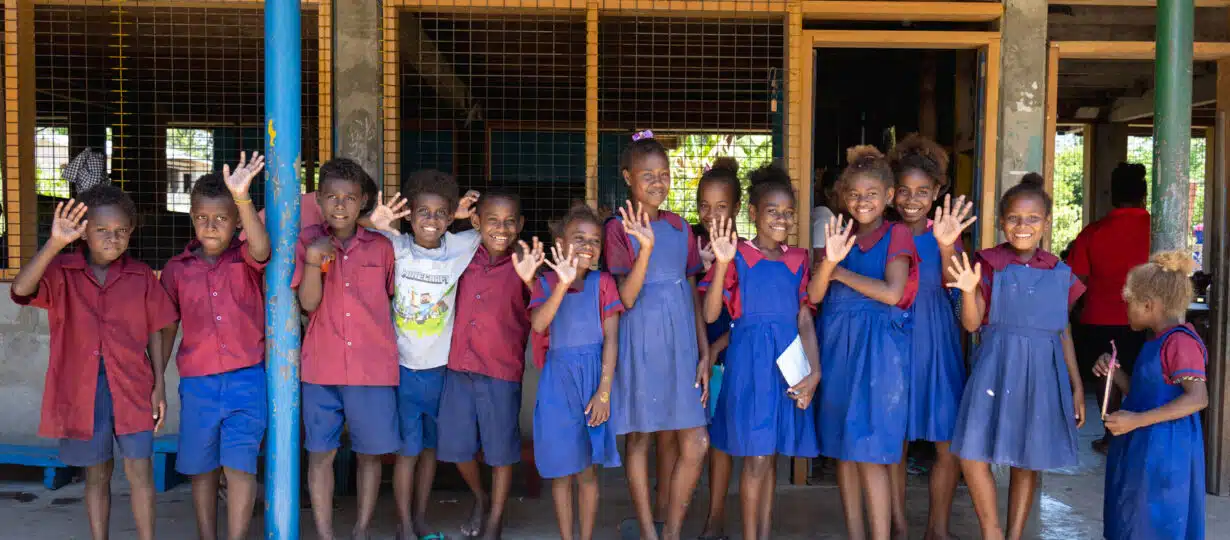
Today we’re launching two ground-breaking youth-led reports, Our Education, Our Future and Stronger Together, featuring photographs taken and captioned by adolescent girls in the Solomon Islands.
Using a photovoice approach, girls captured photographs representing the barriers preventing adolescent girls from accessing and completing secondary education, and the changes they want to see.
Five of these girls are now leading a campaign to address the most significant barrier and school fees
Click on either report to download
Our Education, Our Future provides a policy and contextual analysis to the adolescent girls’ report, Stronger Together. Both reports are a call by adolescent girls in the Solomon Islands to increase their access to secondary education.
This is their research, their voice, their call for change. They are calling on governments, donors, schools, communities and families to create the conditions that will bring about transformative change in their lives, by removing the barriers that stop girls going to and completing secondary education.
A note from our Plan International Solomon Islands Youth Champions
We are Plan International Solomon Islands Youth Champions, Elima, Aroma, Margareth, Katrina and Elizabeth. This report is written by us and a group of 60 adolescent girls in the Solomon Islands and Plan International.
We are trying to solve the problem of the low number of adolescent girls completing secondary education.
We participated in a photovoice project where we identified the barriers standing in our way, and therefore what change we need to see in order to help us all complete secondary education. Each photo in this report represents one of the barriers stopping girls from finishing secondary level, and the captions and comments explain the how, the why and what we want to see change.
This is a really important issue, and we think it is a really good idea to help adolescent girls to complete secondary school.
We care about this issue because it affects many girls in the Solomon Islands.
We care about it because making change would help young women and girls to have a mindset of not giving up, because we would know everyone cares for and respects us, and especially that they value our education.
We care about it because all girls have the right to be educated, especially so we can have jobs in the future.
We identified the following barriers to secondary education in the Solomon Islands:
- School fees
- Relationships, marriage and early pregnancy
- Travelling to school
- Culture
- Family problems
- Bullying and peer pressure
- Quality education and inclusive infrastructure
- Lack of disability inclusive education
The biggest barrier stopping girls from getting to and completing secondary school is school fees. We want these to be eradicated, and for there to be a Fund for Girls that helps schools be more inclusive.
Above all, we want you to respect adolescent girls and listen to what we have to say. We want there to be gender equality in Solomon Islands – and especially for all girls to be able to be in and complete secondary school so that we can be role models and leaders of the future.
Stand with us.
Stand for equality.
“This research is important because it has directly engaged girls in the process from the very beginning. The photovoice project has also provided the girls the opportunity to learn and demonstrate their photography skills; the girls have used photographs to portray certain barriers that hinder them from completing secondary education. Plan International does not seek to speak on behalf of girls but to amplify their voices. This report models this commitment: it is the girls’ voices, it is their perspective.”– Ella Kauhue, Program Manager, Plan International Solomon Islands
Photovoice Approach
PhotoVoice focuses on using photographic images to capture aspects of people’s environment and experiences. The pictures can then be used, usually with captions composed by the photographers, to represent the realities of the photographers’ lives to the public, including policy and decision makers, with the objective of creating social change.
It is a process to understand safe and ethical ways to take photographs and facilitate conversations about what images the photographers took, why, what they demonstrate and what can be learned from them.
This is based on the premise that taking photographs of familiar scenes can change people’s perceptions about their social and physical environment; that seeing what someone else sees is more powerful than simply being told about it; that images can be understood regardless of language, culture and other factors; and that it is hard to deny reality when faced with a visual representation of someone’s lived experience.
The Process
Beginning with the research question, which they co-designed, adolescent girls in the Solomon Islands brainstormed a list of the barriers they face.
They interviewed up to five of their peers and family members, discussing the barriers to girls’ education to further inform the answers to the research question.
After participating in training to capture reality, symbolic and arranged scene photographs, the girls spent a week creating and taking the photos that appear in these reports. All photos were taken by the girls without any external input.
They selected their best images and captioned them, to explain what the photos represent, why they took them and what changes they’d like to see.
Three months later, the girls viewed and commented on the draft report and validated the findings and policy recommendations.

